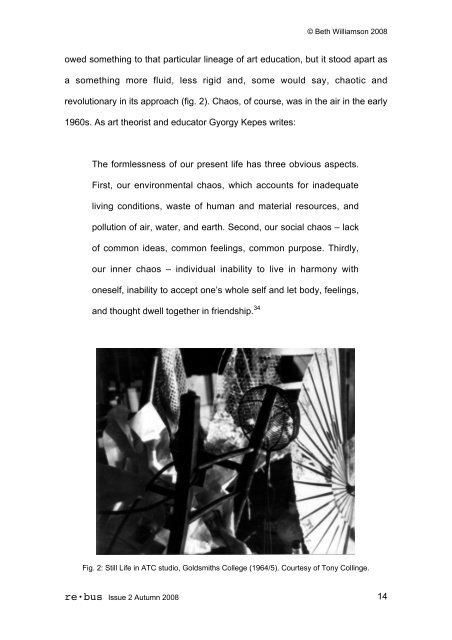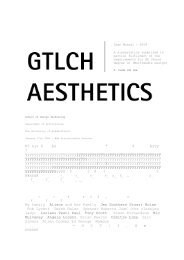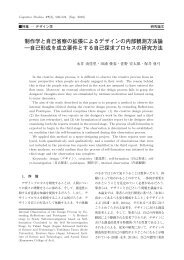Williamson
Williamson
Williamson
Create successful ePaper yourself
Turn your PDF publications into a flip-book with our unique Google optimized e-Paper software.
© Beth <strong>Williamson</strong> 2008<br />
owed something to that particular lineage of art education, but it stood apart as<br />
a something more fluid, less rigid and, some would say, chaotic and<br />
revolutionary in its approach (fig. 2). Chaos, of course, was in the air in the early<br />
1960s. As art theorist and educator Gyorgy Kepes writes:<br />
The formlessness of our present life has three obvious aspects.<br />
First, our environmental chaos, which accounts for inadequate<br />
living conditions, waste of human and material resources, and<br />
pollution of air, water, and earth. Second, our social chaos – lack<br />
of common ideas, common feelings, common purpose. Thirdly,<br />
our inner chaos – individual inability to live in harmony with<br />
oneself, inability to accept one’s whole self and let body, feelings,<br />
and thought dwell together in friendship. 34<br />
Fig. 2: Still Life in ATC studio, Goldsmiths College (1964/5). Courtesy of Tony Collinge.<br />
re·bus Issue 2 Autumn 2008 14





